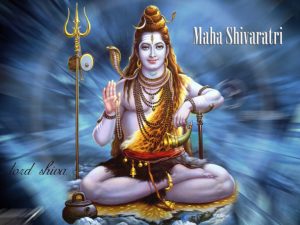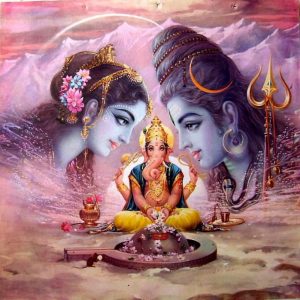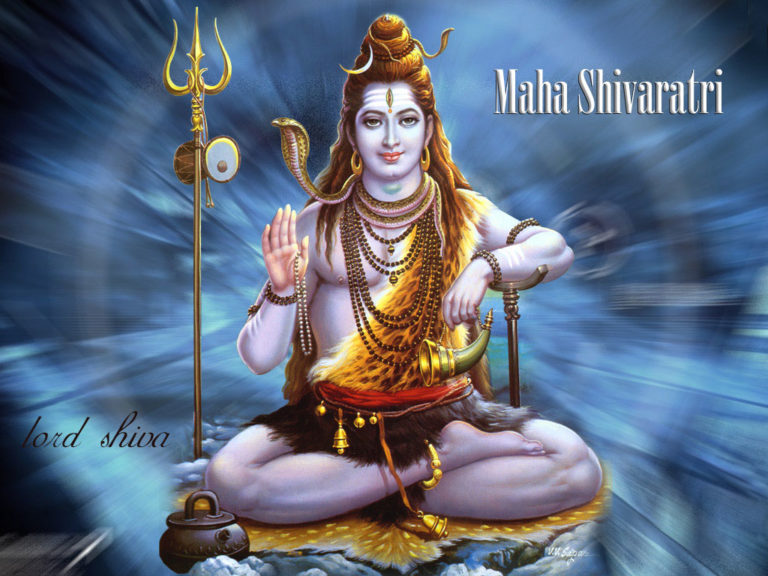 One night of each year in the Vedic or Indian calendar is dedicated to the worship of Lord Shiva. This sacred holiday is known as Maha Shivaratri – the great night of Shiva. According to mypanchang.com, Maha Shivaratri 2018 falls on February 13 in most parts of the world. For residents of New Zealand, Fiji, Australia, Malaysia, and Singapore, Maha Shivaratri 2018 is on February 14. The difference is due to the fact that the holiday is celebrated according to the lunar calendar utilized in Vedic astrology or Jyotish and the phases of the Moon will vary.
One night of each year in the Vedic or Indian calendar is dedicated to the worship of Lord Shiva. This sacred holiday is known as Maha Shivaratri – the great night of Shiva. According to mypanchang.com, Maha Shivaratri 2018 falls on February 13 in most parts of the world. For residents of New Zealand, Fiji, Australia, Malaysia, and Singapore, Maha Shivaratri 2018 is on February 14. The difference is due to the fact that the holiday is celebrated according to the lunar calendar utilized in Vedic astrology or Jyotish and the phases of the Moon will vary.
In the Vedic tradition, there is a trinity of the major GODs: Brahma (the Governor), Vishnu (the Operator), and Shiva (the Destroyer). Shiva translates as “the auspicious one”. Shiva’s worshipers revere his compassion and mercy. He protects his disciples from vices and bestows them with his grace. Shiva removes that which has outlived its usefulness and then allows us to start anew. He can remove our limitations, negativity, and false beliefs. He brings about radical transformation.
Shiva has many names, each of which describes a different attribute. Some names are: Nataraj, Mahesh, Ugra, Maheshwara, Shambho, Shankara, Rudra, etc. Shiva is “Mahadeva” – the great lord. Each name describes a specific quality of the lord’s multi-faceted being. They are recited in the Shiva Mahiman Stotram. Shiva also means “that which underlies.”
REASONS THAT WE CELEBRATE MAHA SHIVARATRI 2018:
- Brahma created the universe was created. Then, he incarnated Rudra at midnight. The Rudram is a sacred chant to Lord Rudra.
 Shivaratri also celebrates the anniversary of Shiva and Parvati’s wedding.
Shivaratri also celebrates the anniversary of Shiva and Parvati’s wedding.- During the samudra manthan, or the churning of the ocean, Shiva drank the poison (hala hala ) which arose from it. By doing so, he saved the world. The poison caused his throat to turn blue. Accordingly, Shiva is called “neela kantha” – the blue throated one. Shivaratri honors Lord Shiva’s heroic deed.
- Shivaratri is the anniversary of the day when Shiva danced the cosmic dance the Tandava. This is his dance when he destroys creation using his third eye. The Shiva Tandava Stotram honors this dance. You can also read the text. The dancing Shiva is known as Shiva Natraraj.
Shiva has a crescent Moon on his head. It represents the cycles of time and that Shiva himself is the master of time. Shiva has a snake around his neck. The snake is a symbol of the kundalini shakti, or spiritual power inside all of us. Shiva’s trident represents the three spheres or wisdom, desire, and implementation.
On this auspicious and sacred night, one repetition of a Shiva mantra is magnified 1,000 times. Due to the great merit of this mantra repetition (or japa), it is customary for people to gather and stay up all night chanting their sacred mantra. People typically fast on this day or refrain from eating grains. Steamed milk with aromatic spices, such as cardamom, as well as cinnamon, nutmeg, and saffron, is prepared and served or left outside in the moonlight. White clothing is traditionally worn on Shivaratri. (An alternate spelling is Shivratri).
On Maha Shivaratri 2018, the Moon in Vedic astrology falls in the nakshatra or constellation of Shravana in Capricorn on February 13th. Shravana is associated with ancient traditions. Symbolized by an ear, this star is associated with listening to inner wisdom. So, it’s a powerful night for your spiritual practices.
PRACTICES FOR MAHA SHIVARATRI 2018:
The rudraksha mala and bracelet are traditionally associated with Lord Shiva. Shiva cried tears when he saw the suffering of humanity. These tears fell to the ground and formed seeds which grew into the rudraksha tree. Thus, this mala is a symbol of purity. Rudra is another name for the fierce form of Shiva. Aksha translates as “eyes”. When doing mantra japa to Shiva, you may benefit from the use of a rudraksha mala.
 While chanting is common in groups and at ashrams, spiritual retreat sites, etc., the focus in entirely inward. As we chant a Shiva mantra, we can connect once again to our own innate divinity and acknowledge that there are multiple facets to our own great being. We can also recognize the divinity that exists in each of us and honor that time and again.
While chanting is common in groups and at ashrams, spiritual retreat sites, etc., the focus in entirely inward. As we chant a Shiva mantra, we can connect once again to our own innate divinity and acknowledge that there are multiple facets to our own great being. We can also recognize the divinity that exists in each of us and honor that time and again.
Immerse yourself in the bliss of Shiva on Shivaratri. Additionally, an abhishek or a ritual bath to a Shiva lingam is traditionally performed on Shivaratri. People bathe the lingam with a mixture of milk, ghee, yogurt, raw honey and natural sugar.
Shubh Maha Shivaratri 2018!

Recent Comments
http://Karma
February 11, 2018 at 6:33 amHi! 2 questions for you,
What does it mean if a partial eclipse falls on same dates?
Advise if all request shiva to drink the poisons in the ocean..again! At a proper time that is..
It’s not that relevant if the eclipse falls on the same date.
More important is the sign of the zodiac and even more important is the nakshatra (lunar constellation)
Well, the oceans are a lot more poisonous now more than 5,000 years ago. We have to do our parts in cleaning it up.
Even if Shiva drank the poison, it’s unlikely that it would stay clean for long given the freedoms which have been given to allow dumping.
Comments are closed.